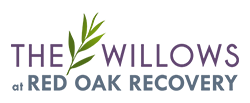Cocaine is a stimulant drug whose use boosts energy levels and produces a euphoric high. Its use is entirely illegal in the United States and poses many physical and psychological dangers to those who use it. Cocaine may appear in either powder or rock form. The powder form is usually snorted or injected, while the rock form, referred to as crack cocaine, is generally smoked. Notably, cocaine abuse accounts for more emergency room visits than any other illicit drug. Its use is also highly related to overdose deaths, with thousands of people across the country affected by a cocaine overdose every year. Looking out for the signs of cocaine use in your loved ones could not only help them live a better life, but it may also just save their life.
Contact The Willows at Red Oak Recovery® at 855.773.0614 to have your questions answered regarding common signs of cocaine use and how you can support someone you love in seeking recovery.
Common Signs of Cocaine Use
The signs of cocaine use can fall into two categories: physical signs and lifestyle changes. Any individual sign on its own could point to a cocaine abuse problem. When multiple symptoms appear at once, it is generally safe to assume your loved one needs help, even if they may not have a full-blown addiction.
Physical Signs of Cocaine Use
Physical signs of cocaine use include:
- Dilated pupils
- A constantly runny nose
- Nosebleeds
- Unexplainable mood swings
- Sleep problems
In addition, people who snort cocaine may display some white powder residue near their nose or mouth. In addition, in people who smoke crack cocaine, burn marks may appear on their hands or fingers.
Lifestyle Changes Resulting in Cocaine Use
Lifestyle changes resulting from cocaine use might include:
- Financial trouble
- An increased desire for privacy
- Withdrawal from family or social circles
- A loss of interest in activities or hobbies the person previously enjoyed
- Lack of attention to hygiene
Another lifestyle change worth looking for is the newfound presence of drug paraphernalia in their room or on their clothes. Things like razor blades, plastic baggies, or spoons when their presence has no decent explanation can indicate cocaine use.
Connecting Your Loved One to Cocaine Addiction Treatment
What comes next if you suspect or even know that your loved one is using cocaine? The first step is to connect them with a source of support. However, not all treatment programs are equal. Your loved one may also be relying on you to support them in finding an appropriate treatment option. The number one thing to look for in an addiction treatment program is the credentials and certifications of their staff alongside the accreditation of the program in general. Every reputable addiction treatment provider operates with certifications and licensure in place. Furthermore, if a treatment provider can’t or won’t prove their credentials, it is best to look elsewhere.
Other considerations include:
- The presence of a multidisciplinary health team
- The use of evidence-based therapies and services
- Mental health services
- Specialized programs
- What insurance they accept
- Ongoing support
In terms of a multidisciplinary health team, addiction treatment programs should employ more than just one type of practitioner. Their staff may include doctors, psychiatrists, psychologists, nurses, nutritionists, and more. A variety of professionals ensures patients receive holistic treatment and support.
Begin Treatment at The Willows at Red Oak Recovery®
One example of a specialized program provider is the women’s cocaine addiction treatment at The Willows at Red Oak Recovery®. Compared to men, women who use cocaine are more likely to develop dependency. Addiction also has a higher probability of escalating quickly with women. Thus, a treatment designed especially for women that takes their biological differences into account typically offers them the best opportunity for recovery. Find out more about the women’s cocaine addiction treatment at The Willows at Red Oak Recovery® by calling 855.773.0614.

